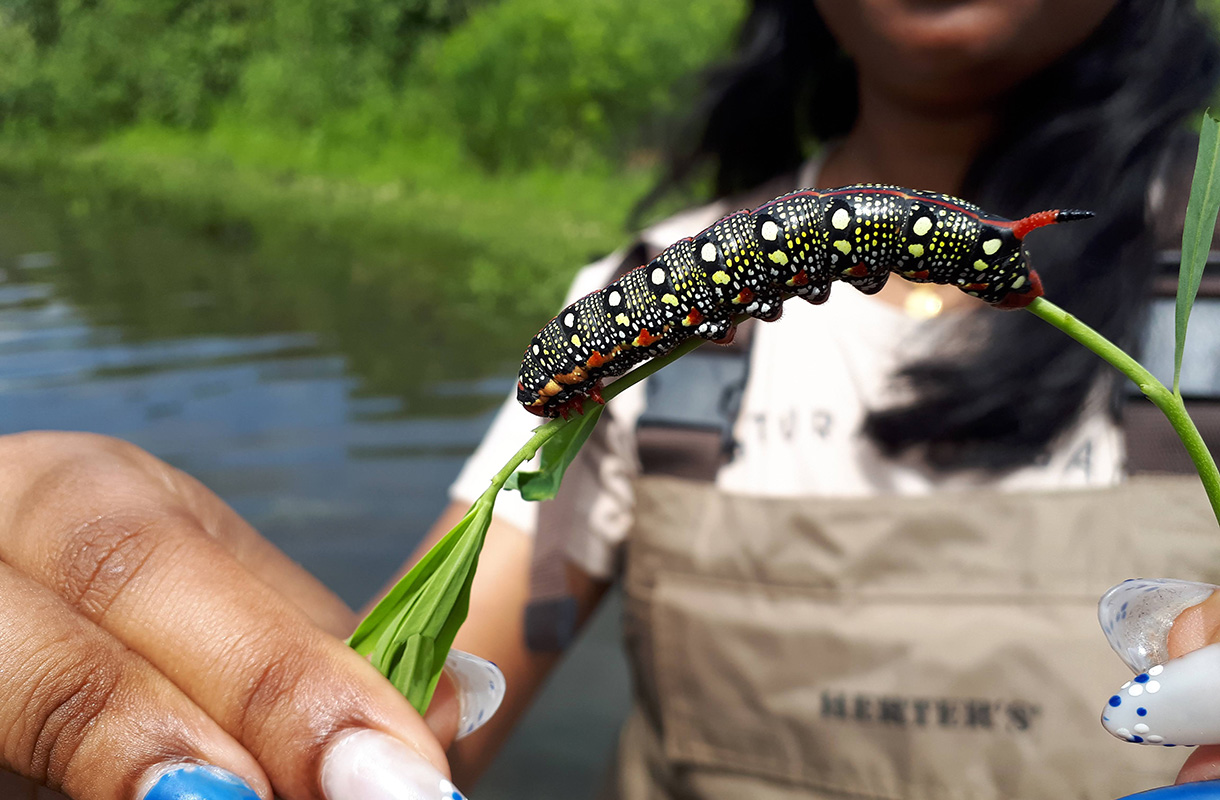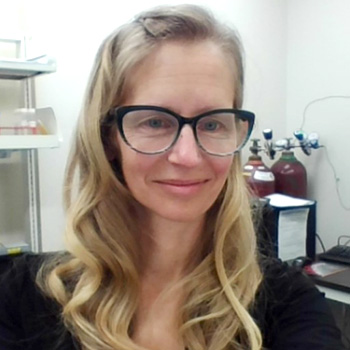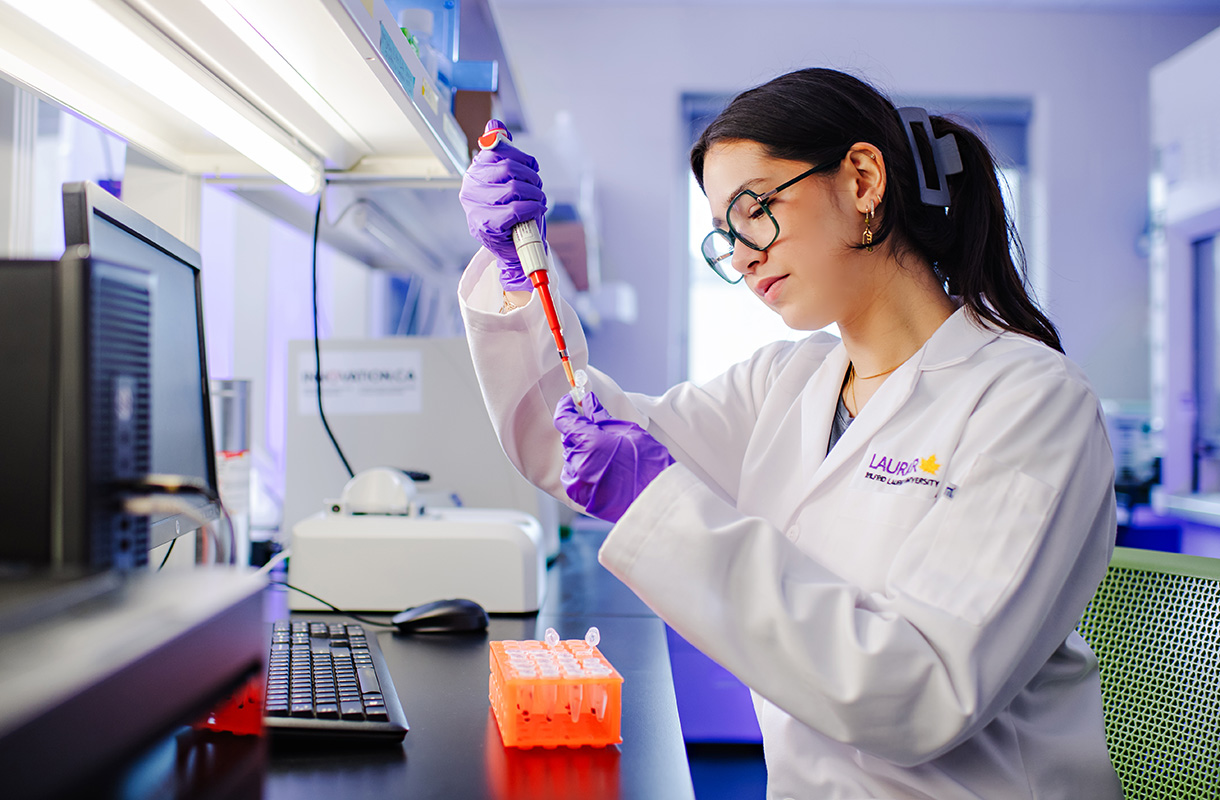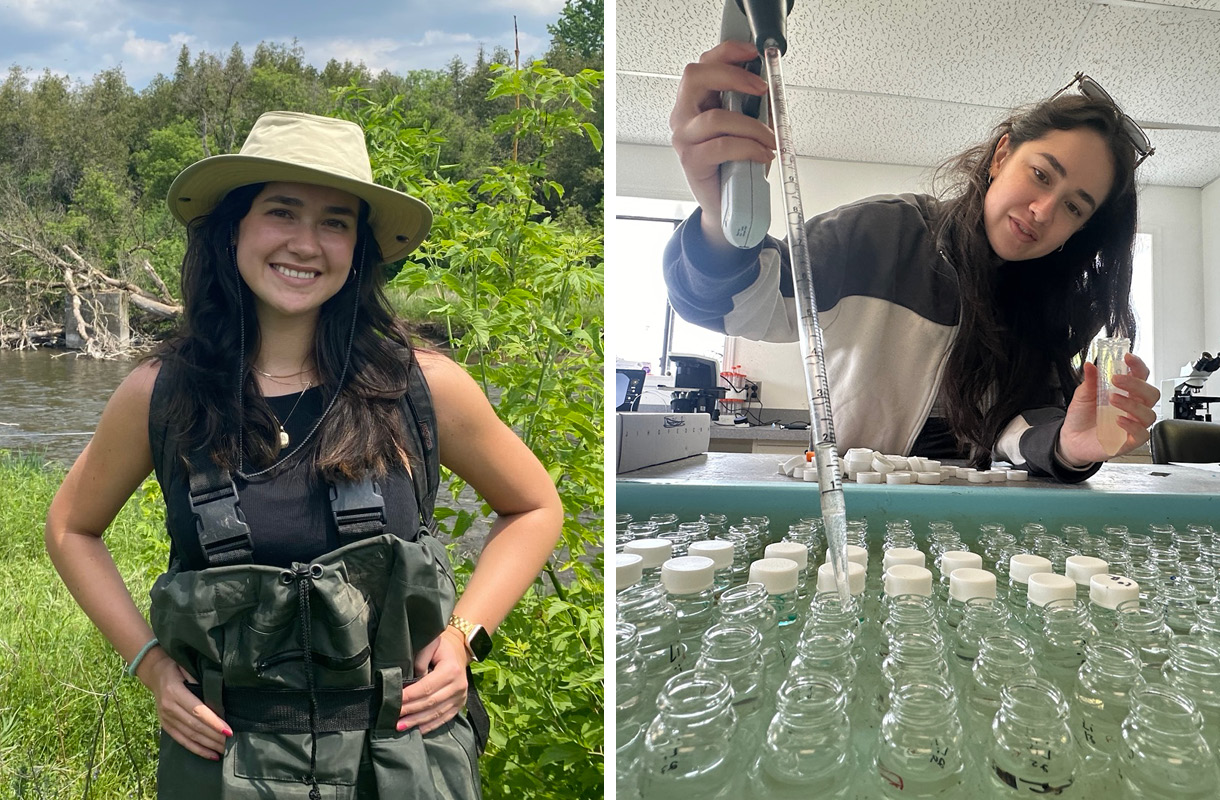Search for academic programs, residence, tours and events and more.
Laurier's AquaSONG Project teaches high school students about the Grand River
March 19, 2025
Update: In October 2025, AquaSONG received the Water Canada Award in Education.
When the Aquatic Science Outreach Network for the Grand (AquaSONG) Project began in 2014, Wilfrid Laurier University scientists took 25 high school students to the Grand River to learn about their local water body. A decade later, between 500 and 700 grade 10 and 11 students from Waterloo Region participate in AquaSONG every year. In the words of one local teacher, it was “the best field trip I’ve ever taken my students on.”
“Even though it’s in our backyard, there are a surprising number of high school students who have never been to the Grand River and don’t know that it supplies a portion of their drinking water,” says Gena Braun, AquaSONG coordinator at Laurier. “Even if they don’t use the river recreationally, they use its water every day. This is a chance for students to connect with their local resource and see the real impact of water use practices in our region.”

Students strap on hip waders and head down to the river, guided by Laurier staff members, to collect water samples at the shore’s edge and study species in their habitat, including bugs, snails and crayfish. Then the group heads to Laurier’s Centre for Cold Regions and Water Science (CCRWS) to learn basic laboratory processing techniques.
“They have the opportunity to collect samples, analyze them and see the data in a five to six-hour period, which is definitely a unique experience,” says Braun.
Laurier also offers a fully indoors version of AquaSONG, which groups students together to design a water filtration system and interpret chemical data.
“The indoor offering fosters collaboration and problem-solving skills and builds their scientific knowledge,” says Braun. “Some of the work they do in the lab is directly connected to the theory in their chemistry courses, so they can see that what they’re learning has real-world implications.”
Braun, a research instrumentation technician at CCRWS, envisioned AquaSONG as an opportunity to share Laurier’s water research expertise and resources and invite students to consider a career in environmental science.

“AquaSONG gives students a chance to see that science goes beyond the chemistry equations they’re struggling with and involves them in protecting this critical resource in a hands-on way.”
Gena Braun, AquaSONG coordinator
“I love science, and I know there are students who think they don't like science because they feel like they're not good at it,” she says. “AquaSONG gives them a chance to see that science goes beyond the chemistry equations they’re struggling with and involves them in protecting this critical resource in a hands-on way."
That sentiment is echoed by Natalie Nykamp (BSc ’24), a Master of Science in Integrative Biology student at Laurier. To help meet the demand for AquaSONG programming, Nykamp and her peers have been visiting local high schools to share their research findings.
“We want to showcase our research and why we love it so much,” says Nykamp. “In the grade 10 environmental science class I was talking to, the students were really engaged and excited by the field work experiences we’ve had.”

Nykamp fell in love with research during her third year of undergraduate study at Laurier when she completed a direct studies project and volunteered in Assistant Professor Erin Leonard’s laboratory. She went on to write a thesis during her fourth year about how toxicants in water can affect breathing and oxygen regulation in fish.
“I studied neodymium, an element that is used in a lot of emerging green technologies, like the batteries for electric vehicles,” says Nykamp. “Not much is known about how neodymium affects aquatic species, and I learned that it blunts their ability to breathe in low-oxygen environments.”
Nykamp knows that her findings, along with her current master’s research, can only influence water quality guidelines if they are clearly communicated to the public. She feels that programs like AquaSONG are critical for fostering science communication.
“Getting people excited about this stuff can be hard,” she says. “It’s difficult for scientists to explain what they're doing and why, because things can get really technical. But what first got me interested in science was someone sitting me down and helping me understand. I want to do that for others.”

AquaSONG runs year-round and registration details can be found on the project’s web page. Braun is grateful to the Natural Sciences and Engineering Council of Canada (NSERC) for its continued support of the program, which covers transportation costs for participants.
“There were a lot of high schools that were not attending because the cost of busing was too much of a hurdle,” says Braun. “The NSERC funding has made a big difference. We are seeing more students from a range of different schools coming now.”
The remaining costs for AquaSONG are covered by Laurier’s Faculty of Science, including volunteer time by staff members Max Pottier, Anthony Straus, Emily McConnell, Chris Bartlett and Hannah Hasold.